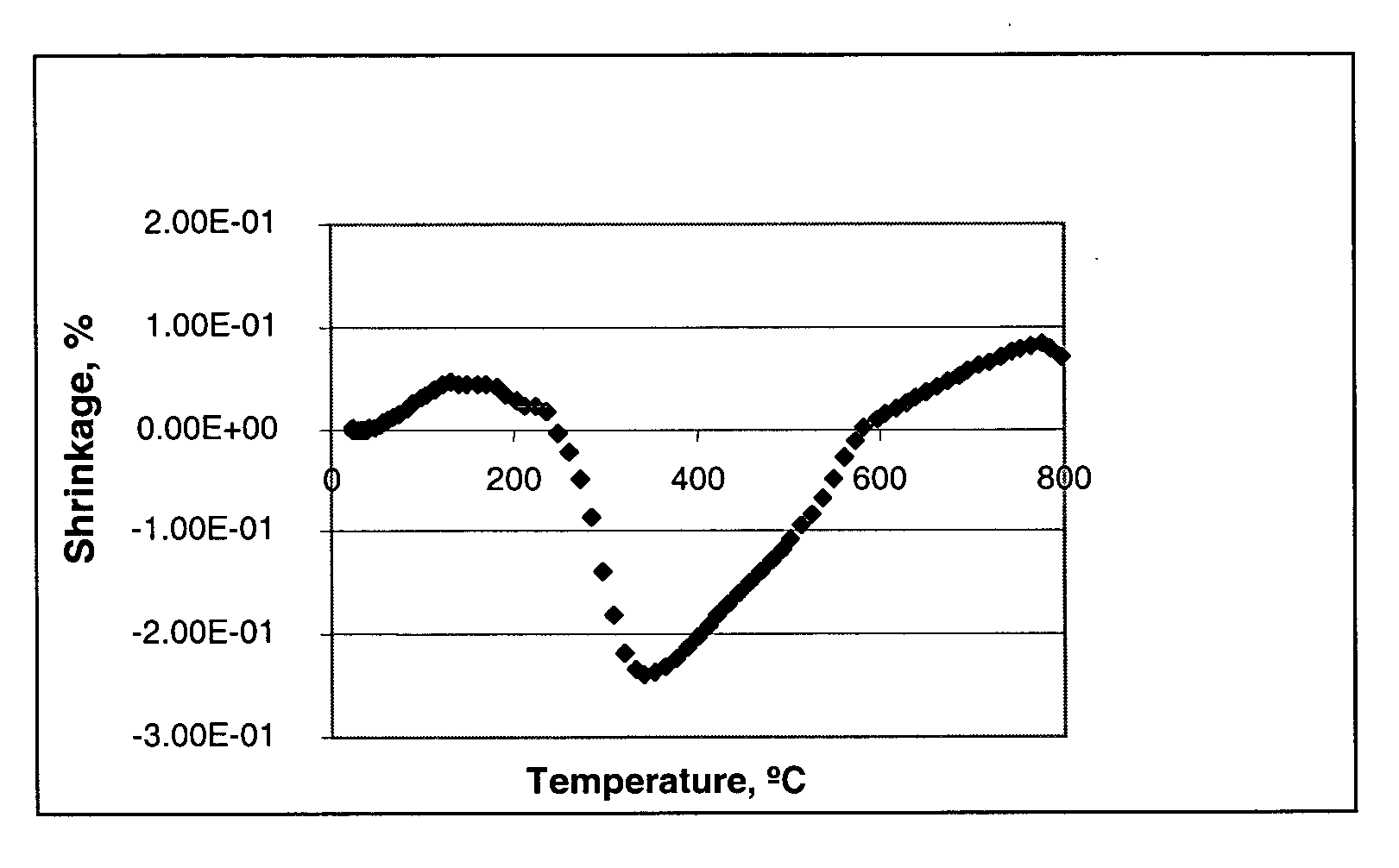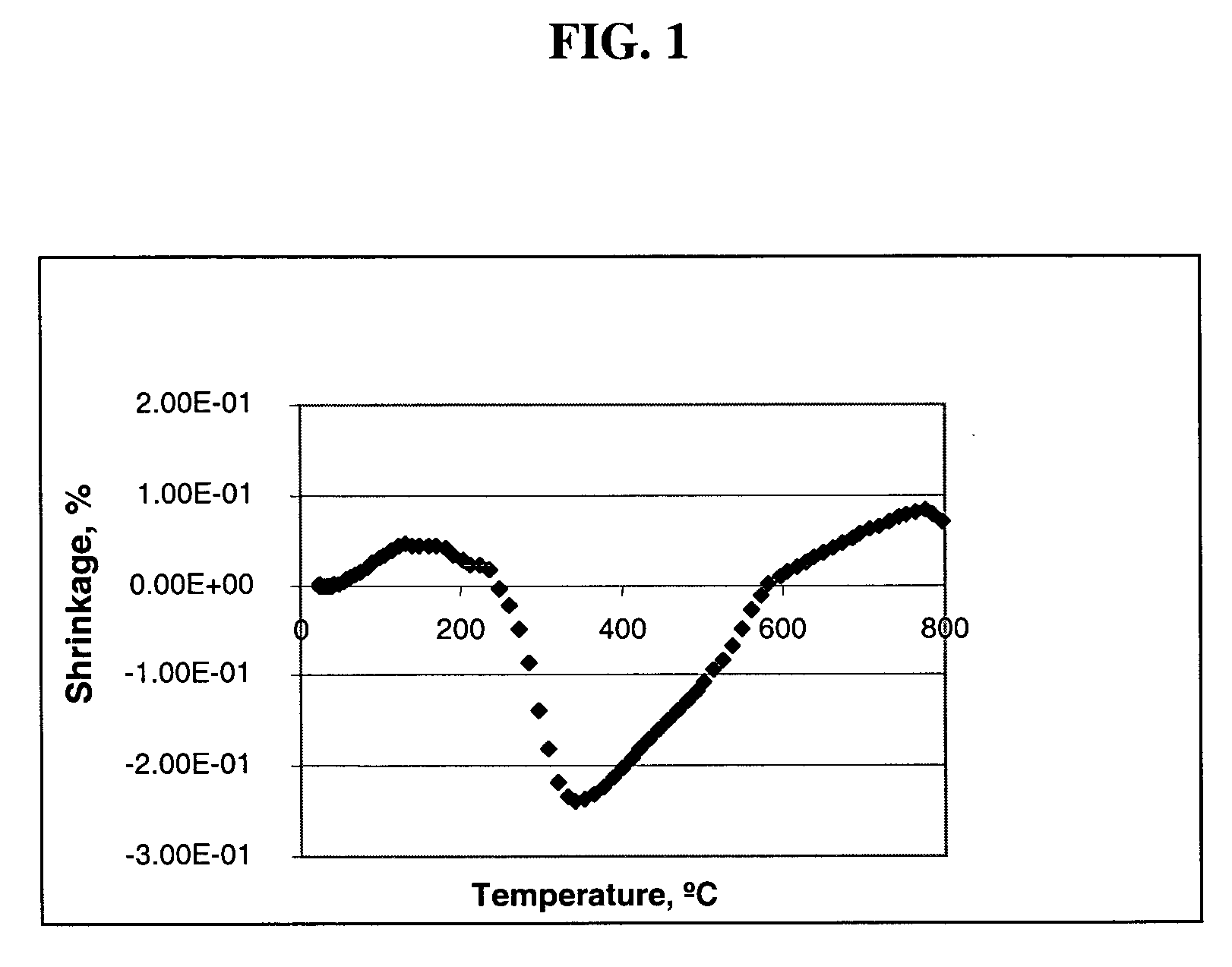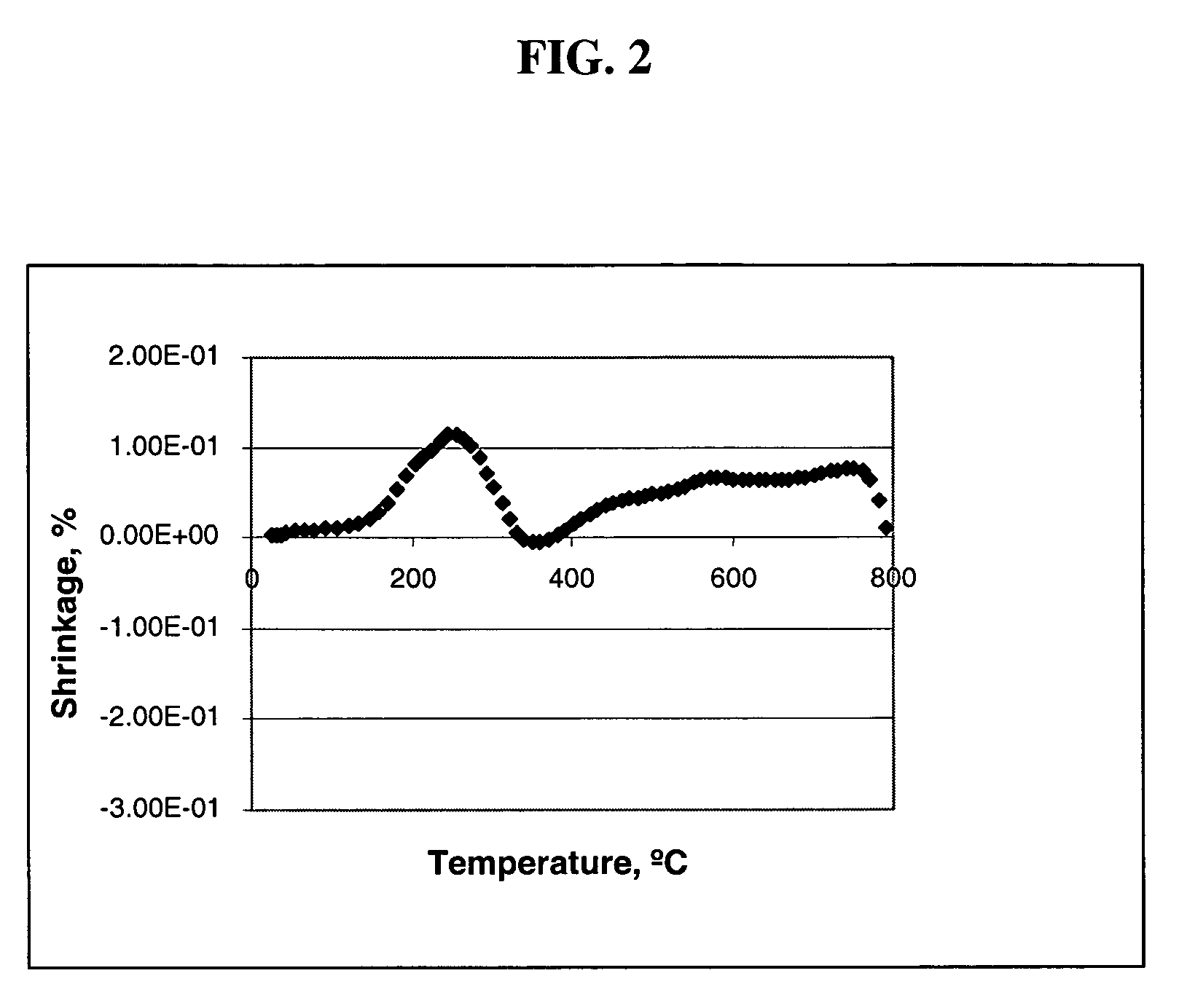Method for fabricating ceramic articles
- Summary
- Abstract
- Description
- Claims
- Application Information
AI Technical Summary
Benefits of technology
Problems solved by technology
Method used
Image
Examples
examples
[0040] Samples are prepared according to the compositions provided in Table I below. The dry ingredients are weighed, and mixed with water and other batch components, followed by kneading in a stainless steel muller to form a plasticized batch which is then extruded into cellular honeycomb bodies consisting of multiple parallel channels of square cross section. The cellular bodies contain approximately 200 cells per square inch (csi) and have a wall thickness of 0.019 inches.
TABLE I1234567CompInvInvInvInvInvInvRaw MaterialsWt %Wt %Wt %Wt %Wt %Wt %Wt %Talc (MPS = mm)39.9639.1637.9936.0239.1637.9936.02α-Al2O3 (MPS = mm)21.5421.1420.7920.3221.1420.7920.32Al(OH)3 (MIPS = mm)16.3516.3516.0215.3516.3516.0215.35Silica (Quartz) (MPS = mm)22.1521.3520.2018.3121.3520.2018.31Acti-gel 208 ® (Attapulgite Clay)0.002.005.0010.002.005.0010.00Methocel ™ F240M (Methylcellulose)5.005.005.005.002.502.502.50Graphite (MPS = mm)10.0010.0010.0010.0010.0010.0010.00Sodium Stearate1.001.001.001.001.001.001....
PUM
| Property | Measurement | Unit |
|---|---|---|
| Temperature | aaaaa | aaaaa |
| Length | aaaaa | aaaaa |
| Percent by mass | aaaaa | aaaaa |
Abstract
Description
Claims
Application Information
 Login to View More
Login to View More - R&D
- Intellectual Property
- Life Sciences
- Materials
- Tech Scout
- Unparalleled Data Quality
- Higher Quality Content
- 60% Fewer Hallucinations
Browse by: Latest US Patents, China's latest patents, Technical Efficacy Thesaurus, Application Domain, Technology Topic, Popular Technical Reports.
© 2025 PatSnap. All rights reserved.Legal|Privacy policy|Modern Slavery Act Transparency Statement|Sitemap|About US| Contact US: help@patsnap.com



